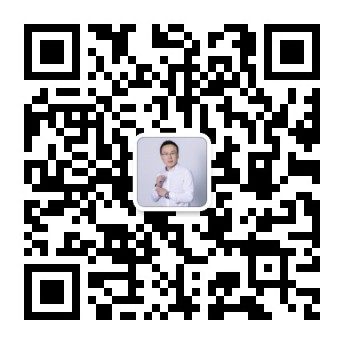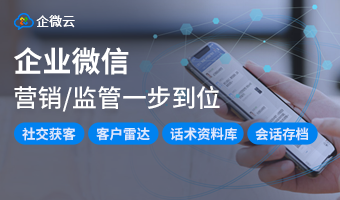摘要:Facebook 去年花了几千万收购了当时才上线3个月的针对青少年的 app tbh。一封从公司内部泄露出来的邮件,披露了 tbh 创始人分享给 Facebook 同事们的争取用户鸡贼小技巧,大家坐稳了。
作者:Ryan Mac
当Facebook去年10月收购TBH时,它得到的不仅仅是一款在推出几个月后,每天就有250万用户(其中大部分是青少年)的病毒式民调app,同时还获得了一个针对中学生用户精心制定的增长战略。
从BuzzFeed获得的一份Facebook的内部文件显示,TBH的领导层披露了一种经过充分测试可用于吸引个别高中下载其应用程序的方法。通过该文件,可以让人们了解Facebook“不惜一切代价实现增长”的心态,以及该公司在青少年中人气下降的同时,努力让关键人群参与进来的努力。
“我们的团队非常着迷于找到让不同中学同时采用一种产品的方法。”
在这份机密备忘录中,TBH的创始人告诉他们的新同事,他们使用了一种“心理技巧”来吸引大批青少年用户,这是一种将Instagram上的中学生账户信息抓取过来、迎合年轻人的好奇心、利用课余时间的组合方法。
Facebook的一位发言人拒绝就这篇文章置评,也拒绝就该公司是否采用了从TBH那里学到的增长策略置评。
尽管Facebook上个月声称“因为使用率低”关闭了TBH,但据知情人士透露,该公司以不到3000万美元的价格购买了这款app,其在关键时刻提供了大量的学习机会。除了帮助Facebook推出和调整自己的民意调查工具外,这份文件还显示,它还提供了明确针对年轻用户的增长策略。
TBH的创始人写道:“分享这些策略的目的是为Facebook的产品开发提供指导,特别是那些尚未达到产品市场适配度的产品。”
尽管Facebook上周宣布,每月至少有25亿人在使用该公司的一款应用程序——包括Facebook、WhatsApp、Instagram和Messenger,但有分析人士认为,TBH风格的策略可能是该公司未来增长的关键。Pew Research Center最近的一项调查显示,为了维持这一数字,Facebook将需要取悦其最重要的用户群体之一。但考虑到Facebook在青少年中的受欢迎程度已经落后于YouTube和Snapchat,所以看起来这是一项具有挑战性的任务。
“Facebook知道他们需要赢得下一代的支持,他们需要尝试一切,”科技企业家Nikil Viswanathan说。“他们聪明的做法是,花点时间去学会让别人做一些有意义的事情,这样他们就可以学习一些东西。”
消除应用程序需要井喷式的媒体活动宣传以获得早期牵引力(这种策略只会创建“零散的”用户群并吸引“少数硅谷社交名流”)的概念 ,TBH的创建者概述了“一种新方法”来吸引中学生:
TBH注意到中学生在 Instagram 个人资料都会写上自己是某某学校的,发现这一规律后tbh 就创建一堆 Ins 账号,每个账号针对一所中学,然后关注该学校的一堆学生;学生们回复加关注请求后,TBH会在隔天下午4点,学校放学的时候,放上其app下载链接,批量批准回粉的那些学生的加好友请求;此刻,同一学校大批量的学生同时收到消息推送,同时下载 app,就这样新产品成功冷启动。
该公司发现青少年天生好奇,会跟踪这些私人账户
TBH的创始团队告诉他们在Facebook同事,团队通常会等上24小时,收集高中生的所有跟帖请求,然后再进入下一个关键阶段。
“下午四时(黄金登录时间™),当学校放学时,公司会将App Store URL添加到配置文件中,”TBH团队写道。此后不久,这家初创公司就会公布Instagram上面的个人资料,从而促使Instagram通知学生,他们的关注请求已被接受。青少年将看到通知,然后访问个人资料,并在帐户的新公共个人简介中显示下载链接。就这样,许多人就跟随着链接进入到TBH中。
TBH称其方法对于一家大公司来说“过于混乱”。
虽然TBH没有违反Instagram的服务条款——Instagram允许用户创建多个账户,而且不要求他们披露真实身份——但它承认Facebook可能不会批准使用该方法。尽管如此,TBH团队还是看到了“类似的在Facebook使用这些战术的方式”。
“例如,在使用Facebook的Quick Promos(或QPs)时,我们应该避免提供即时下载链接。”注解中指出,“相反,我们应该请求推送通知权限,以便在晚些时候通知目标用户。这样,我们就可以收集他们的兴趣,同时与他们联系,以确保在登录时间达到临界质量。”
以下是TBH备忘录全文:
At tbh, we built 15 products during the five years of our company. We had many painful lessons about product development that led us to design a systematic method of launching and testing new apps. The purpose of sharing these tactics is to provide guidance for developing products at Facebook—specifically ones that have not reached product-market fit yet.
1. Create a reproducible process of penetrating communities
Traditionally, most products get their initial users through press outreach. However, for social products, this is usually a formula for failure: you end up with highly fragmented users across your audience, meaning the community will not have critical mass. Users won’t be able to find their friends, aside from a handful of Silicon Valley socialites who are actively downloading new mobile apps.
In addition, the initial product is most likely multiple iteration cycles away from product-market fit. However, due to exposure created by the initial launch, the audience will be fatigued and ignore subsequent updates. And the press will also be unlikely to cover them.
Therefore, it is critical to design a process that allows you to launch vastly different product experiences within specific communities so your product can reach critical mass and so you don’t prematurely exhaust your audience’s attention.
How we did it
Our team obsessed with finding ways to get individual high schools to adopt a product simultaneously. We designed a novel method that was reproducible, albeit non-scalable.
Our first breakthrough was that we discovered that teen Instagram users would frequently list their high school in their bios (e.g. “Sophomore at RHS”). We would simply crawl the school’s place page and then follow all the accounts that contained the school’s name. However, we hit a roadblock: users would view our Follow Requests at varying times of the day so it derailed our efforts to get their attention simultaneously.
We eventually identified a psychological trick:
1. Set the app’s Instagram profile to Private.
2. Set the bio to something mysterious, e.g., “You’ve been invited to the new RHS app—stay tuned!”
3. Follow the targeted users.
4. Wait 24 hours to receive the inbound Follow Requests. (They were curious about our profile so they requested access)
5. At 4:00PM when school gets out (The Golden Launch HouseTM), add the App Store URL to the profile.
6. Finally, make the profile Public
This notified all students at the same time that their Follow Request had been accepted—and they subsequently visited our profile, looked at our App Store page, and tried the app.
We conducted these sorts of launches every few weeks until we arrived at the right product. Each time, we further automated the process and spotted inefficiencies. For example, Apple would review our apps slower when they were completely new submissions. So to solve that, we retained that same app binary—and submitted new products as an app update.
While some of our methods are certainly too “scrappy” for a big company, there are analogous ways to employ these tactics at Facebook. For example, when using Facebook’s Quick Promos (or QPs), we should avoid providing an instant download link. Instead, we should request push notification permission to alert the targeted users at a later date. That way, we can collect their interest and contact them simultaneously to ensure critical mass during launch hour. (Credit to [name redacted] for suggesting that method)
版权声明:
凡本网内容请注明来源:T媒体(http://www.cniteyes.com)”的所有原创作品,版权均属于易信视界(北京)信息科技有限公司所有,未经本网书面授权,不得转载、摘编或以其它方式使用上述作品。
本网书面授权使用作品的,应在授权范围内使用,并按双方协议注明作品来源。违反上述声明者,易信视界(北京)信息科技有限公司将追究其相关法律责任。




评论